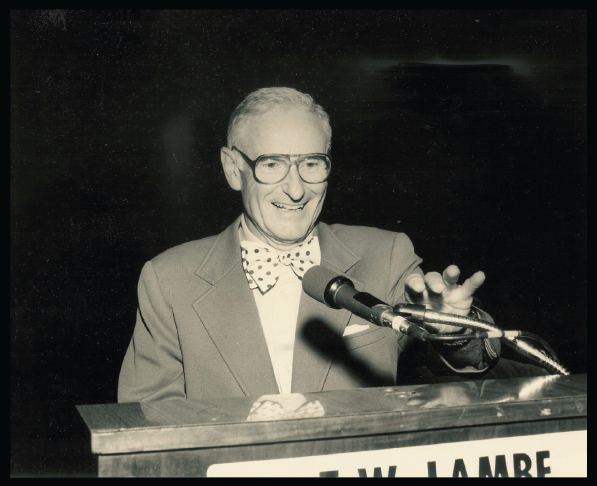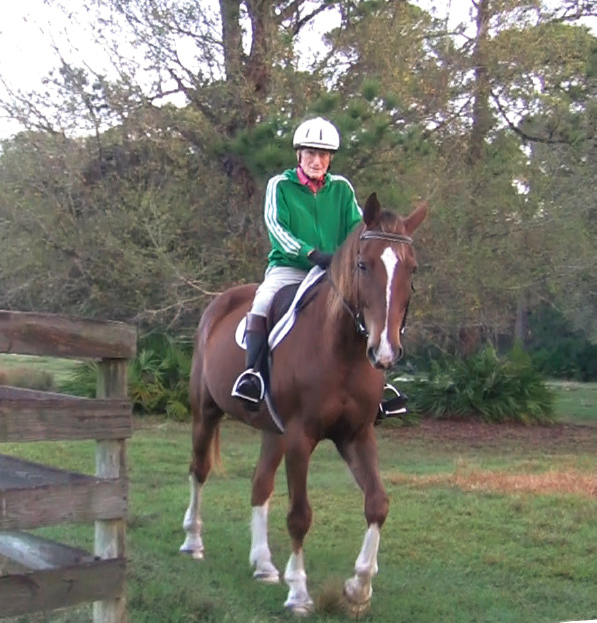T. WILLIAM LAMBE
1920–2017
Elected in 1972
“Contributions to knowledge of soil structure and behavior, settlement control, foundation performance and earth structures.”
BY W. ALLEN MARR
THOMAS WILLIAM LAMBE, 96, of Sarasota died peacefully March 6, 2017. He was born November 28, 1920, in Raleigh, North Carolina, the son of Claude Milton and Mary Habel Lambe.
He graduated from North Carolina State University in 1942 with a bachelor of science in civil engineering and worked for a while before beginning graduate study in 1943 at MIT, where he received a master’s degree in civil engineering in 1944 and a doctor of science degree in soil mechanics in 1948. In July 1945 he was appointed an instructor at MIT and reached the rank of full professor in 1959. Ten years later he was appointed the first Edmund K. Turner Professor of Civil Engineering, a position he held until his retirement in 1981. He also served as director of the Soil Stabilization Laboratory and head of the Geotechnical Division in Civil Engineering. Under his leadership, soil mechanics at MIT achieved worldwide eminence.
After the premature death of Donald W. Taylor in 1955, Lambe became the senior soil mechanics professor at MIT, soon joined by a growing cadre that included Harl P. Aldrich (NAE 1984), Robert V. Whitman (NAE 1975), R. Torrence Martin, and Charles C. Ladd (NAE 1983). This period, which extended through the 1970s, saw an expanding influence of the MIT soil mechanics program on the profession worldwide,
in both academic research and professional practice. Seminal among these contributions was the stress-path method, largely developed by Lambe and Whitman and summarized in their coauthored text. Lambe’s 1973 Rankine Lecture, “Predictions in soil engineering,” 1 introduced the concept of types of engineering predictions based on the level of analysis and the timing of the forecast. This taxonomy remains in widespread use today.
The classification of predictive approaches was typical of Professor Lambe’s research, with a close relation to engineering practice. Many remember the five workshops he organized and ran, in which colleagues from the world over were asked to make performance predictions that were later compared to the results of major field experiments. Another remarkable example of his ability to link benefits between research and practical engineering was the instrumentation of foundation work for many MIT buildings constructed during the 1960s—described in his 1970 Terzaghi Lecture 2—and for Boston area subway construction, including the Red Line through Harvard Square.
The impacts of his work were fundamental and far-reaching. Of his many important contributions—including in soil chemistry, soil stabilization, and ground freezing—the stress path method and formalization of geotechnical predictions stand out. His textbooks Soil Testing for Engineers (Wiley & Sons, 1951) and Soil Mechanics (coauthored with Whitman; Wiley & Sons, 1969) were pathbreaking.
As a consultant, Lambe worked for clients not only in many parts of the United States but also in Egypt, Japan, Jordan, Libya, the Netherlands, Puerto Rico, Qatar, Turkey, and Venezuela. The projects involved earth dams for storage of water, oil, and mining waste; landslides; building foundations; foundations for an offshore storm surge barrier in the Netherlands; and hydraulic reclamation projects, among
___________________
1 Published in Géotechnique 23(2):149–202.
2 The Integrated Civil Engineering Project. ASCE Journal of the Soil Mechanics and Foundations Division 98(6), June 1972.
others. Many MIT geotechnical students were educated to become engineers through practice-oriented research and direct or indirect involvement in his consulting projects. He remained active as a consultant until he was in his early 90s.
Dr. Lambe’s technical contributions were nationally and internationally recognized. He was a member of the National Academy of Engineering (1972), a fellow of the Institution of Civil Engineers (ICE), and an honorary member of the American Society of Civil Engineers (ASCE) and Southeast Asian Society of Geotechnical Engineering. His more than 100 publications earned him many awards, including ASCE’s Norman Medal (1964), Karl Terzaghi Award (1975), and Wellington Prize (1984), and the NC State University College of Engineering Distinguished Engineering Alumnus Award (1982). NASA twice recognized his contributions to the Apollo program for which he shaped the exploration program for the surface of Earth’s moon. For the National Academies, he was appointed to serve on the Committee on Natural Disasters (1983–87).
Bill enjoyed tennis, golf, badminton, skiing, equestrian sports, cattle ranching, boating, and fishing. A man of numbers—he often said the best adjective is a number—during his life he lived in 21 homes in seven states. After retirement from MIT, he participated in 14 reunions of his growing family in six US states and two Canadian provinces. He was also a member of the Longview Society in Sarasota, Florida, that met monthly to discuss a variety of national, international, and societal subjects.
His wife of 59 years, Catharine “Kit” Cadbury Lambe, preceded him in death. He is survived by their children—Philip (Catherine) in North Carolina, Virginia (Robert Guaraldi) in New Hampshire, Richard (Michele) in Washington, Robert (Judith) in Massachusetts, and Susan (Scott Clary) in Virginia—as well as 14 grandchildren and seven great-grandchildren.






